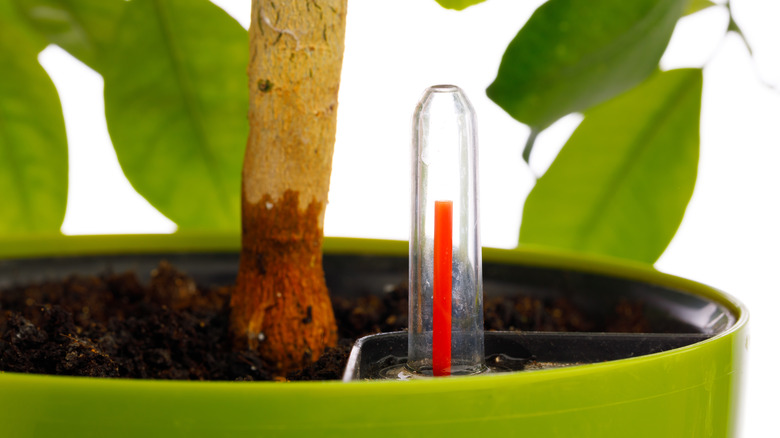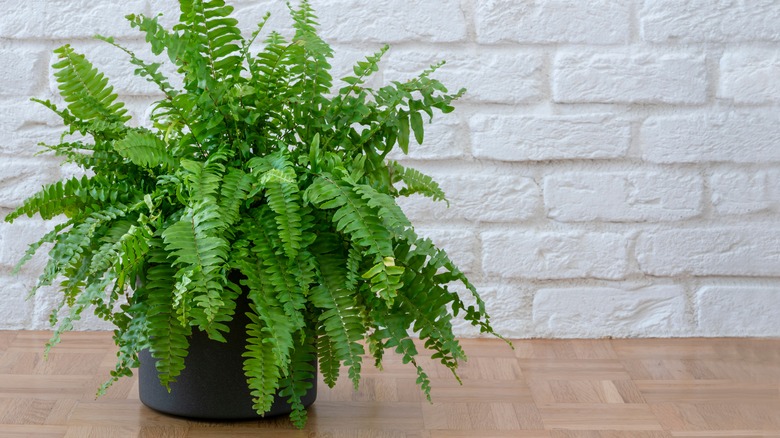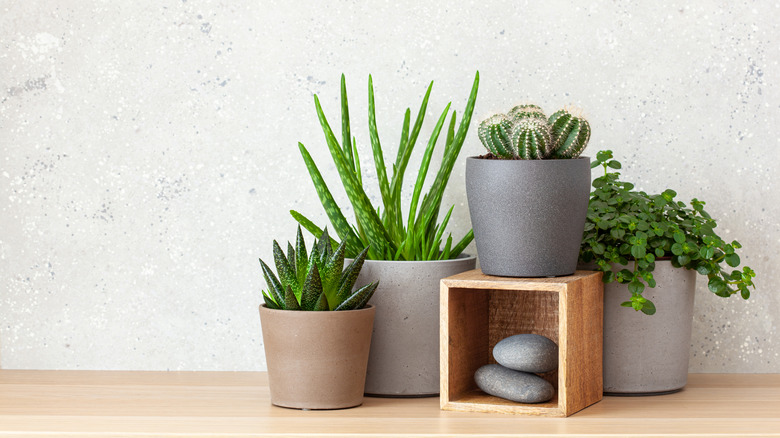Should You Use Self-Watering Planters?
Although there are many styles and designs of self-watering planters, they all have the same basic principle — you fill a reservoir with water and the plant roots absorb the moisture as needed. Instead of watering your plant weekly, you can check the reservoir less frequently to see if it needs to be refilled.
According to Gardening Products Review, there are two main ways that self-watering planters work. The first is a wicking system in which you place a wick inside the container that absorbs water from the bottom reservoir, pulling it up into the soil when it's dry. The second and most common is a planter in which the bottom section of the soil stays in constant contact with the water in the reservoir, pulling the water up when the soil is dry. While the first system wicks water all the way up to the soil surface, the second option encourages deeper roots as they grow to reach for moisture. Self-watering planters are an efficient way to grow some plants, while others will not benefit from the constant water.
Plants that benefit from self-watering planters
Self-watering planters are perfect for plants that need consistently moist soil. Most tropical plants want damp soil that drains well. Indoor Plants for Beginners recommends using this type of planter for peace lilies and monsteras. Ferns, palms, and other moisture-loving plants can also benefit from self-watering planters.
Plants in the African violet family can also do well in this type of pot. Although they do not like soggy soil, these plants thrive in a variety of growing conditions as long as they do not dry out. A good quality self-watering planter will have an overflow system that allows excess water to either drain out of the container or back into the reservoir, so these planters are perfect for folks who want to grow most standard houseplants but travel a lot. Self-watering planter options also work well for anyone who is too busy to spend a lot of time on houseplant maintenance or who just tends to be a bit forgetful.
Plants that do not benefit from self-watering planters
Some plants need to dry out completely between watering. Planter Homa states that succulents and cacti should not be grown in self-watering planters because a constant supply of water does not mimic their natural environment. Since the benefit of this type of planter is the ability to keep the soil consistently damp, this environment will lead to root rot in these types of plants. To provide the right growing conditions for these dry soil lovers, place them in a planter with good drainage using a soil mix specifically made for succulents and cacti.
Whether or not you should use a self-watering planter for your outdoor plants depends largely on your environment. If you are growing tropical plants in an arid environment, this type of planter can be an efficient way to keep your plants sufficiently watered. Conversely, if you live in an area that gets consistent rainfall, outdoor plants in self-watering containers can easily get overfilled and hold too much water if the reservoir does not drain quickly. In this case, it's best to let mother nature do the watering and use a standard planter with good drainage.


